The history of AIANY reflects that of New York City and all the ferment, folly, frustration, fun, and high hopes of this complex urban center. The timeline below also gathers the contributions of individual members, both locally and internationally, who represent the broadest cross-section of interests, backgrounds, and talents appropriate to the founding chapter of the American Institute of Architects (AIA). AIANY endeavors to be at the forefront of sustainability, practice, planning, technology, and equity—the things that really interest and affect our members and our global city.
1857: On February 23, 1857, 13 architects meet in Richard Upjohn’s office in Manhattan, forming what would become the American Institute of Architects (AIA) to “promote the scientific and practical perfection of its members” and “elevate the standing of the profession.” Until this point, anyone who wished to call themselves an architect, including masons, carpenters, bricklayers, and other members of the building trade, could do so.
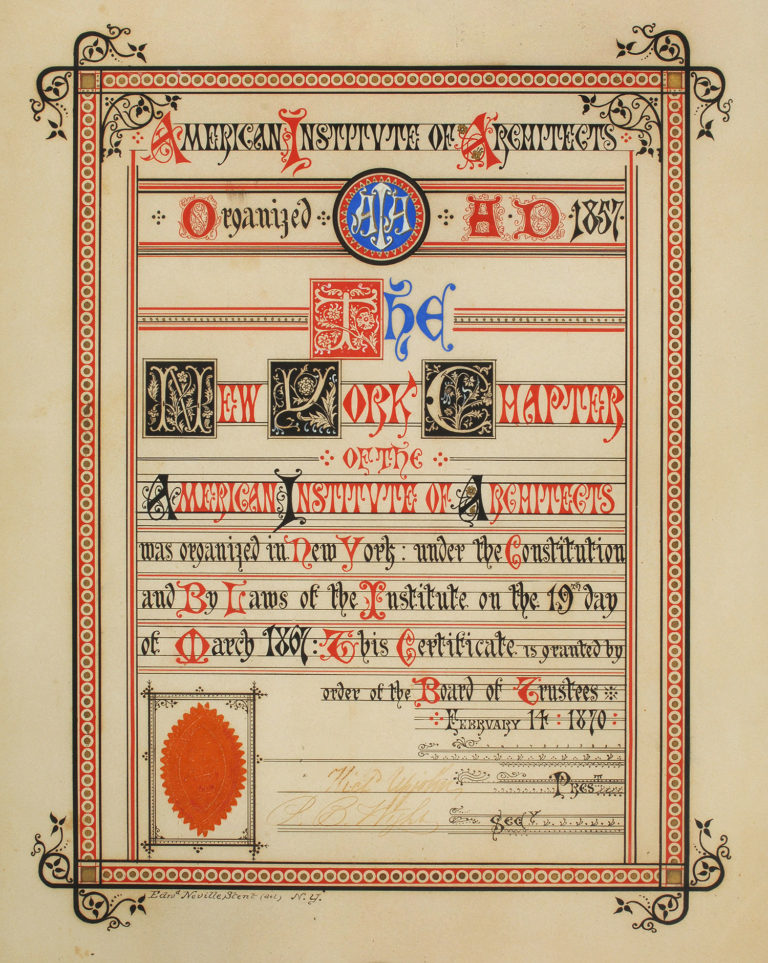
1867: By the mid-1860s, architects from other cities seek to join the AIA. Members decide that, from here on out, chapters would be formed in cities across America and make their original group the first official local chapter. The newly minted New York Chapter of the American Institute of Architects (AIANY) holds its first meeting on March 19 and hosts the first AIA Convention later in 1867.
1910: The LeBrun Grant is established to further the personal and professional development of an early- or mid-career architect through travel.
1910: The Apartment House Medals and Certificates of Honorable Mention are established, marking the beginning of the Chapter’s Design Awards programs.
1916: The 1916 Zoning Resolution, the first citywide zoning code in the United States, is enacted. AIANY played a key role in developing the plan.
1917: AIANY introduces the Medal of Honor, one of the highest honors for distinction in the profession.
1938: AIANY introduces Oculus, the Chapter’s official newsletter. The publication is named after the circular opening at top of a dome (as in the Pantheon in Rome), symbolizing “the function of this leaflet in shedding light on the activities of the Chapter.”
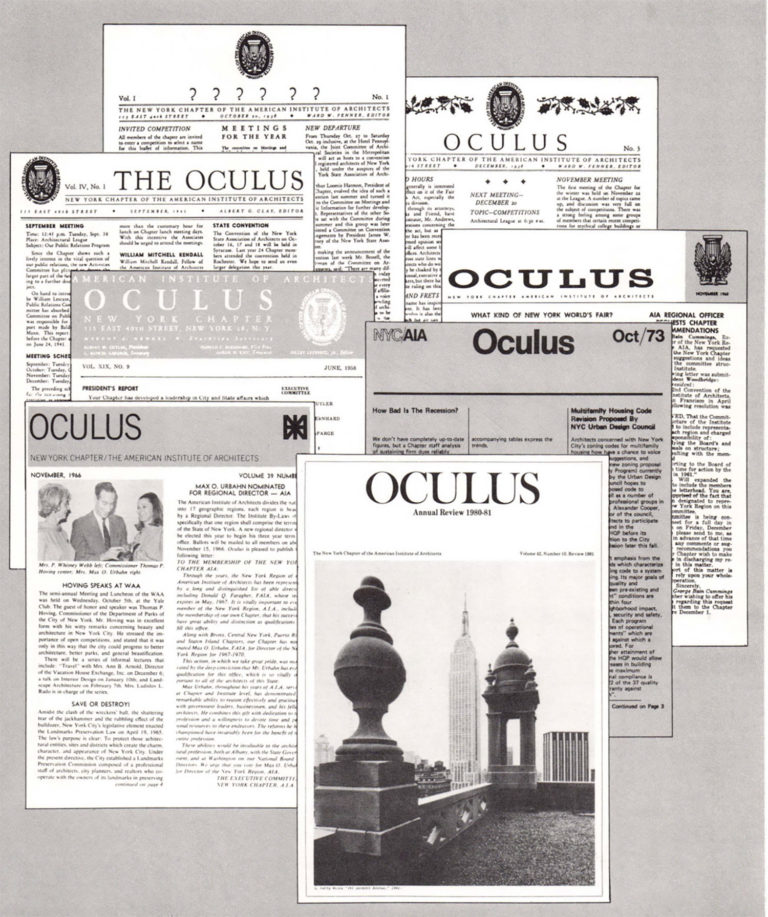
1939: World’s Fair opens in New York, planned and designed by AIANY members. The chapter acts as host to visiting architects and organizes Architects’ Day, a series of tours, lectures, and events to stimulate dialogue among international architects and designers.
1940: The Arnold W. Brunner Grant is established, funding advanced study to mid-career professionals in any area of architectural investigation that contributes to the knowledge, teaching, or practice of architecture.
1941-1945: AIANY joins the war effort, establishing U.S. Architect’s Fund for R.I.B.A for children of British architects affected by the war, connecting members to government jobs, and organizing volunteers and emergency committees.
1947: New York City is selected as the site of the United Nations. AIANY’s Civic Design Committee members play a key role in the headquarters development, led by Wallace Harrison.
1948: Over 30,000 people attend the Chapter’s exhibition, Tomorrow’s World, at the New York Museum of Science & Industry, AIANY’s most ambitious undertaking to date.
1952: AIANY launches Architects Lobby Day, where members travel to Albany to lobby state legislators on issues affecting the profession.
1956: AIANY membership reaches 1,000.
1957: A plaque placed on 111 Broadway in Lower Manhattan commemorates the centennial founding of the AIA. Mayor Wagner and Governor Harriman honor Chapter and AIA and declare New York’s first “Architecture Week.”
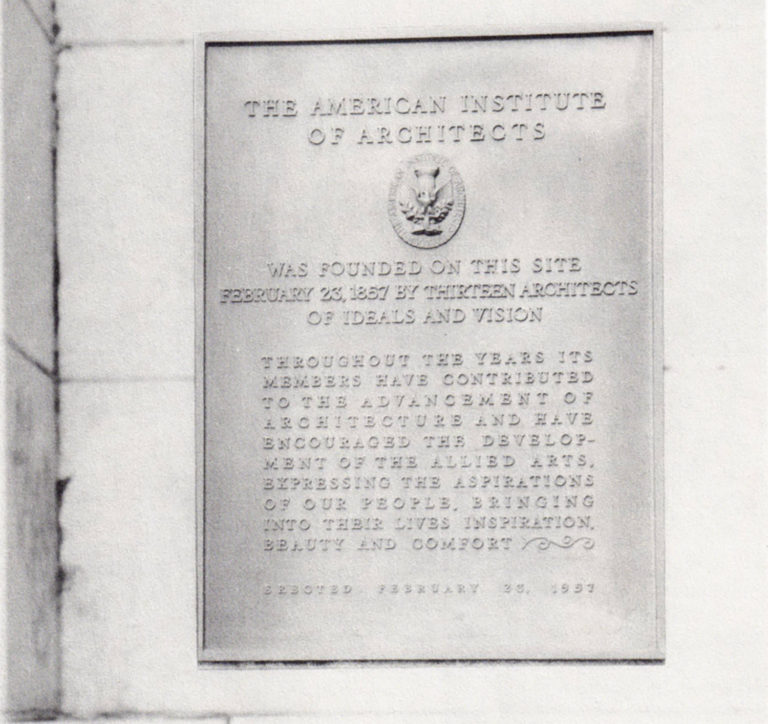
1958: The Architecture of Diplomacy, an exhibition of embassy and consulate buildings commissioned by the U.S. Department of State and organized by AIANY, the Architectural League, Life Magazine, and Architectural Forum, opens in New York. The Chapter also hosts an exhibition of work by Black architects organized in conjunction with the League and the Council for the Advancement of African Americans in Architecture.
1958: Chapter advocates alongside Jane Jacobs and other activists to preserve Washington Square Park and the surrounding area from the Lower Manhattan Expressway. AIANY and allied partners form a Special Committee on Neighborhood Conservation Program for New York City.
1961: The Chapter advises on new zoning resolution, the first comprehensive zoning since 1916. AIANY had been involved with the process since 1948.
1963: AIANY works hard but fails to secure the preservation of Penn Station. The Chapter becomes a leading voice in the establishment of the Landmarks Preservation Commission.
1963: Equal Opportunities Committee is formally established to administer scholarship fund for minority students across the city.
1967: The highly popular AIA Guide to New York City is released. The Chapter would continue to assist in the publication of this landmark guide until 2010.
1967: New York Foundation for Architecture is formally incorporated “for charitable, educational, literary, scientific, and philanthropic purposes, including the advancement of the profession of architecture and architectural research service and art” and quickly becomes the largest foundation of any AIA Chapter. Soon after, the Foundation launches its first major K-12 initiative, hosting children in architecture offices across the city, much like our current Discover Architecture program.
1971: The Chapter releases report, “Environment: A Professional Responsibility,” focusing on air quality and emissions, AIANY’s first major initiative to address climate change.
1973: AIANY takes unprecedented political action, releasing official letters of protest to President Nixon condemning escalation of the Vietnam War and the cutting funds to low- and middle-income housing.
1973: The Chapter exhibition The Architect and the Energy Crisis: Architecture as an Energy User opens. The show, praised by Ada Louise Huxtable as “groundbreaking,” travels to the AIA Convention in San Francisco and around the country.
1974: A Women in Architecture exhibition opens at AIANY headquarters and the Women in Architecture Committee is formed. Only 3% of architects are women at this time.
1977: AIANY partners with City Planning Department to design New York’s first playground for children of all abilities, signaling the Chapter’s involvement in accessibility advocacy well ahead of the ADA passage in 1990.
1978: Ronald Allwork Scholarship endowed.
1980: The Chapter moves into the historic Villard Houses, establishing the Urban Center in partnership with the Municipal Arts Society, the Architectural League, and the Parks Council.
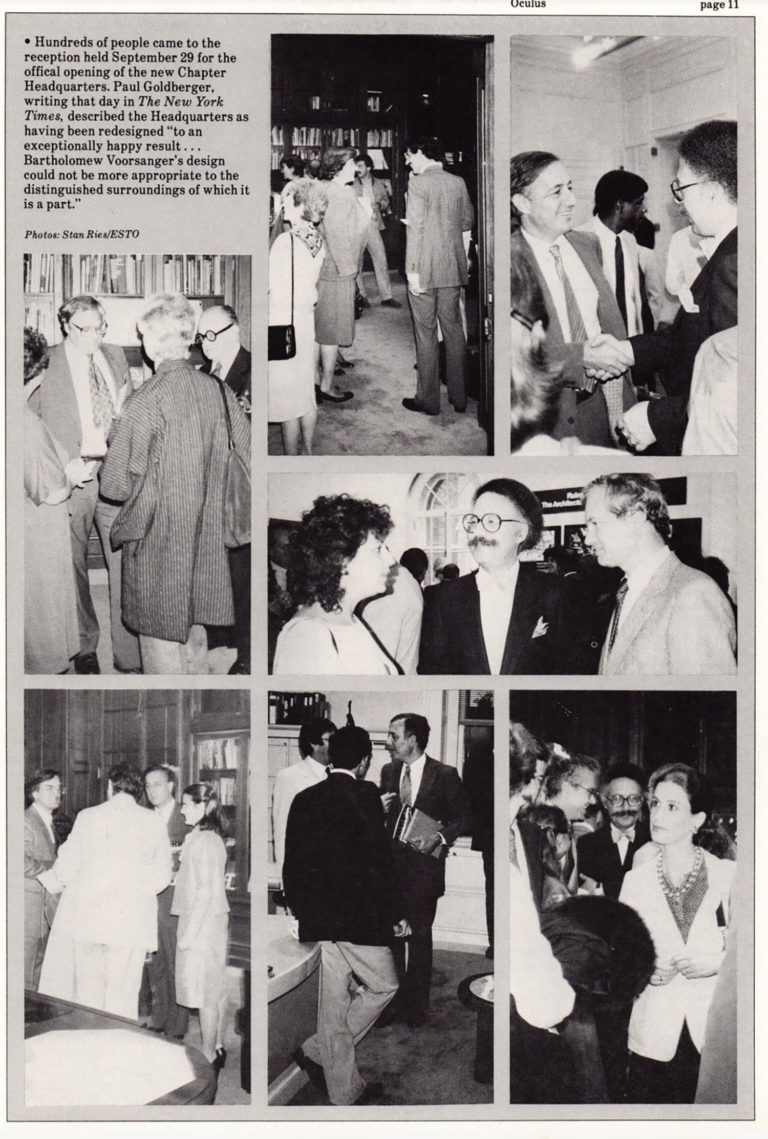
1980: Oculus Magazine is redesigned by Massimo Vignelli.
1982: The AIANY Design Awards are established, recognizing work in all typologies.
1984: The Douglas Haskell Award for Student Journals is established, recognizing writing and journalism by students in architecture schools.
1985: The Chapter receives its first major grant from the NEA to promote the effectiveness of architects in public service.
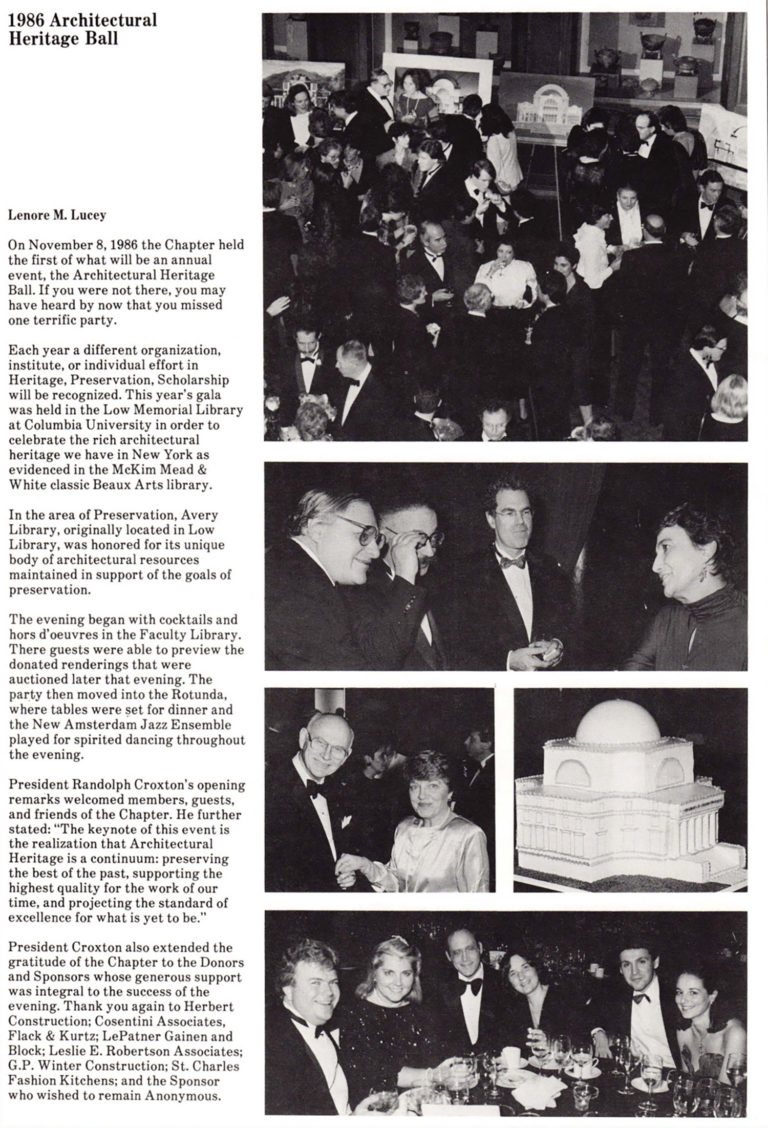
1986: AIANY hosts the first Heritage Ball (later renamed Common Bond: The Center for Architecture Gala) to benefit the New York Foundation for Architecture (later the Center for Architecture).
1988: The Chapter hosts the first show of Russian Constructivist drawings permitted outside the USSR.
1988: The Chapter hosts the AIA Convention.
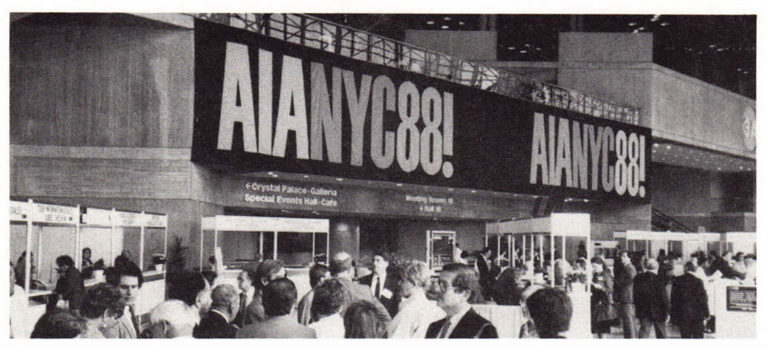
1990: AIANY partners with Women In Need to explore how architects can develop supportive residential environments for people experiencing homelessness.
1991: Frances Halsband, FAIA, becomes the first woman president of AIANY.
1991: Chapter launches Learning by Design: New York, encouraging architects to volunteer in K-12 programs to promote early architecture and design education.
1993: Housing Committee hosts Mayoral Debate on Housing, featuring Mayor David Dinkins and Rudolph Giuliani.
2001: AIANY and allied organizations launch New York New Visions, a group that advises government agencies on urban design and planning guidelines for the redevelopment of Lower Manhattan after the destruction of the World Trade Center.
2003: Following a design competition won by Andrew Berman Architect, the Center for Architecture opens in Greenwich Village.
2006: AIANY partners with the NYC Department of Health and Mental Hygiene to launch FitCity, a conference exploring how the built environment can create opportunities to increase physical activity and improve health equity across neighborhoods. The initiative, which also inspired a traveling exhibition in 2013, is held annually until 2019.
2009: In response to the Great Recession, AIANY launches Not Business as Usual, a member-driven initiative that helps thousands of architects, designers, and allied professionals.
2011: AIANY launches Archtober, NYC’s annual, month-long architecture festival, bringing design activities to the five boroughs and serving as the Chapter’s largest public outreach initiative.
2012: In response to Superstorm Sandy, AIANY and the AIANY Design for Risk and Reconstruction Committee spearhead a collaborative initiative to investigate issues and outline opportunities to address the short-, intermediate-, and long-term impacts of climate change on New York City, culminating in the “Post-Sandy Initiative” report.
2016: AIANY partners with NYC Department for the Aging to develop Aging in Place Guidelines for Building Owners, offering recommendations to protect the safety of older tenants.
2017: AIANY launches the Civic Leadership Program, an annual, six-month program during which 10 emerging professionals gain skills in community engagement and advocacy to better represent the communities they serve.
2018: With support from the Rockefeller Foundation, the Center for Architecture and AIANY develop the Zero Waste Design Guidelines in conjunction with over 100 collaborators, helping the city to achieve its goal to send zero waste to landfill by 2030.
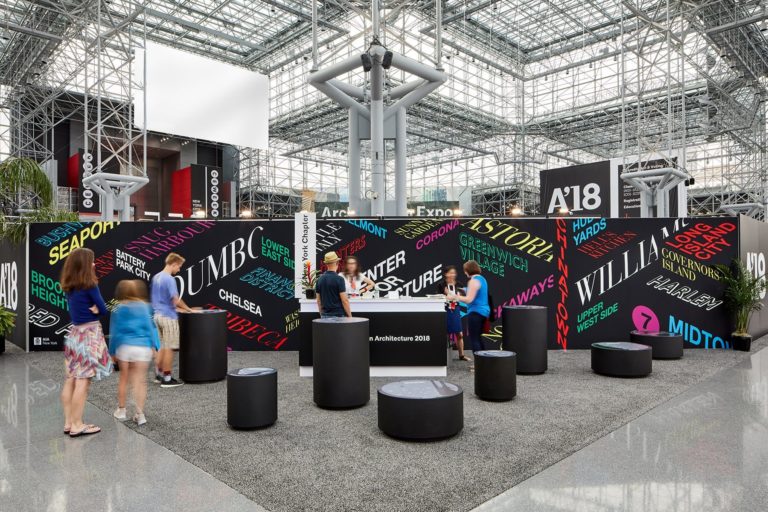
2018: AIANY hosts the AIA Conference on Architecture, organizing hundreds of architect-led tours and launching its annual Day of Service program. At the conference, former chapter president Frances Halsband, FAIA, with the support of AIANY, introduces a resolution to amend the AIA’s Code of Ethics to address issues of sexual harassment and equity.
2020: AIANY and AIANYS form the AIANY-NYS Unified Crisis Taskforce to aid in the response to the COVID-19 pandemic. The task force becomes instrumental to the development of the Design Corps, a volunteer network launched by AIANY, NYCxDESIGN and the NYC Economic Development Corporation that assists restaurants in adapting to pandemic guidelines.
2020: The AIANY Board of Directors issues the “Criminal Justice Facilities Statement,” encouraging members to consider redirecting their efforts toward restorative justice or pursue areas of design that serve to uplift users and communities in response to the racialized abuses of the American criminal justice system.
2020: AIANY and AIANYS form the AIANY-NYS Unified Crisis Taskforce to aid in the response to the COVID-19 pandemic. The task force is instrumental to the development of the Design Corps, a volunteer network launched by AIANY, NYCxDESIGN and the NYC Economic Development Corporation that assists restaurants in adapting to pandemic guidelines.
2020: Organized by the Cultural Facilities Committee in partnership with New York- and Rotterdam-based cultural forecasting and institutional strategy firm David Van Der Leer Design Decisions, the AIANY Future of Cultural Centers series considers the role of museums following uncertainty amidst the COVID-19 pandemic.
2021: AIANY 2021 President Kenneth A. Lewis, AIA, in collaboration with nycoba|NOMA, creates the 2030 Fund to help BIPOC professionals pursuing licensure pay their student loans. The fund supports NOMA’s 2030 Challenge, which aims to double the number of licensed Black architects by the end of the decade.
2021: AIANY joins forces with the Alfresco NYC coalition in advocating to make the pandemic’s Dining Out NYC program permanent. AIANY later helps shape the creation and implementation of new design guidelines, resulting in four prototypes for the NYC Department of Transportation (DOT) and the Mayor’s Office.
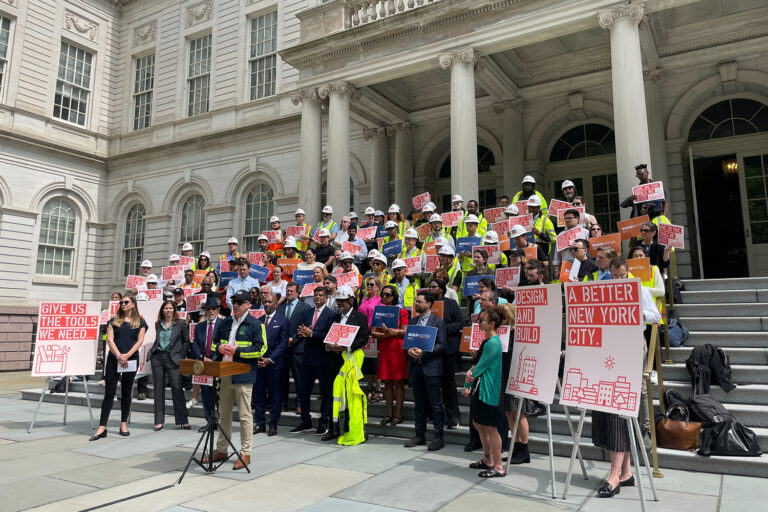
2022: As part of the NYC Capital Process Reform Task Force, AIANY partners with industry experts and agency leaders to find efficiencies in the capital design and delivery process, reflected in a published series of recommendations.
2023: AIANY launches the LGBTQIA+ Alliance, a new LGBTQIA+ affinity group for the Chapter. The aim is to bring together LGBTQIA+ architects, other professionals, and their allies to create programming, provide networking opportunities, celebrate queer identity, and offer support around workplace inclusion and other issues.
2023: AIANY, CARRRE, and Salt Beyoğlu organize a program series discussing disaster relief and earthquake reconstruction in Türkiye and Syria.
2023: AIANY, along with Municipal Art Society of New York and Open Plans, lead a coalition to advocate for an appointed design expert to ensure design-related policies are properly implemented. In June, Mayor Adams names Ya-Ting Liu as New York City’s first-ever Chief Public Realm Officer.
2024: Greg Switzer, AIA, NOMA, NCARB, is inaugurated as AIANY’s first-ever Black president. His presidential theme, Belonging and Beyond, centers around the physical and social-emotional health and resilience of individuals and communities.
2024: AIANY launches Open Door Mentor, a program to help college students and young professionals navigate challenges and opportunities in their pursuit of a profession in architecture.
2024: The City Planning Commission approves the AIANY-backed City of Yes for Housing Opportunity, the largest amendment since 1961. The text makes critical changes to the city’s zoning, enabling more affordable housing in every neighborhood.
2025: Amidst political and social uncertainty, the Chapter organizes AIANY Town Hall: Navigating 2025 Together, an in-person gathering at the Center for Architecture sharing business impacts, industry concerns, and paths forward.







